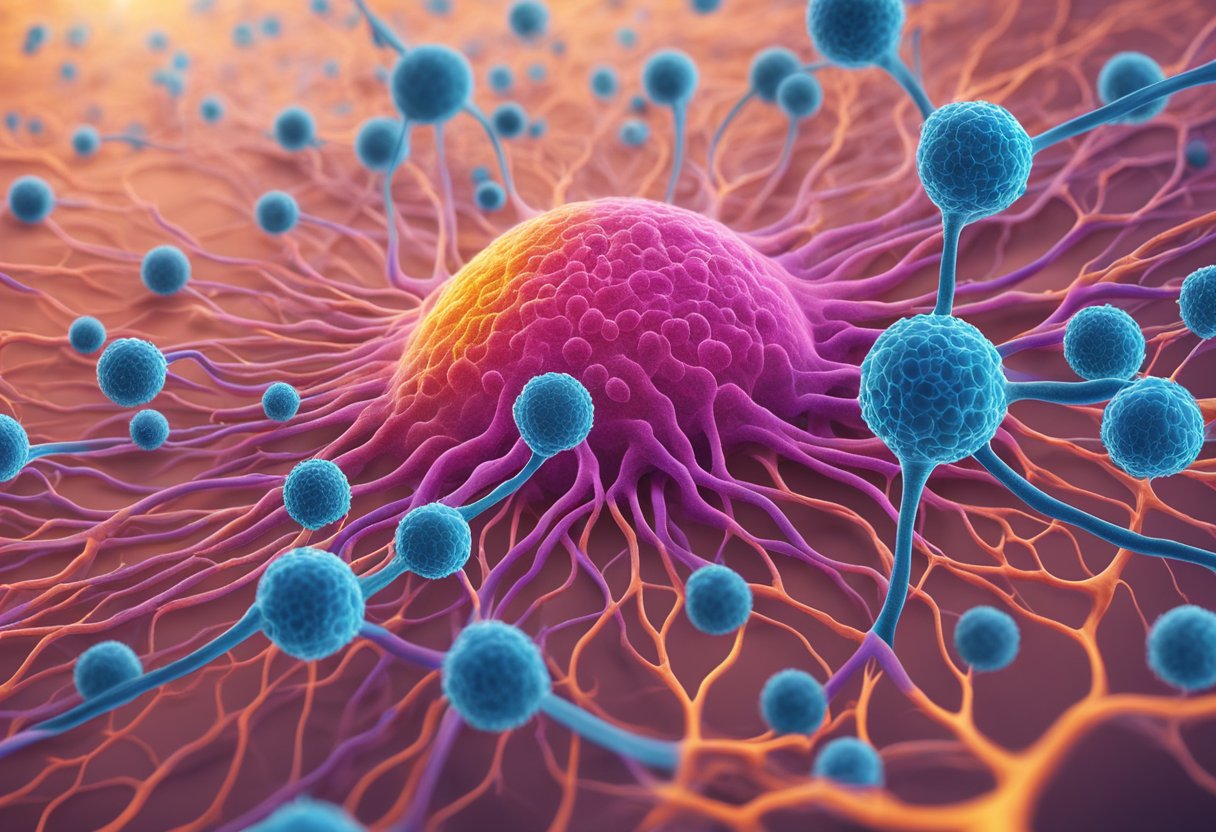Nanotechnology has shown immense potential in revolutionizing the field of medicine. It involves the manipulation of matter at the nanoscale level, which is roughly 1 to 100 nanometers.
The unique properties of nanoparticles make them ideal for various applications in medicine, including diagnosis, drug delivery, and regenerative medicine.
The use of nanotechnology in medicine has opened up new possibilities for early diagnosis and treatment of diseases. Nanoparticles can be functionalized with biomolecules to target specific cells or tissues, enabling early detection of diseases like cancer.
In addition, nanotechnology can also be used in drug delivery systems to improve the efficacy of drugs and reduce side effects.
Nanoparticles can encapsulate drugs and deliver them directly to the site of action, improving drug bioavailability and reducing toxicity.
Key Takeaways
- Nanotechnology has immense potential in revolutionizing the field of medicine.
- Nanoparticles can be functionalized with biomolecules to target specific cells or tissues, enabling early detection of diseases like cancer.
- Nanotechnology can be used in drug delivery systems to improve the efficacy of drugs and reduce side effects.
Fundamentals of Nanotechnology in Medicine
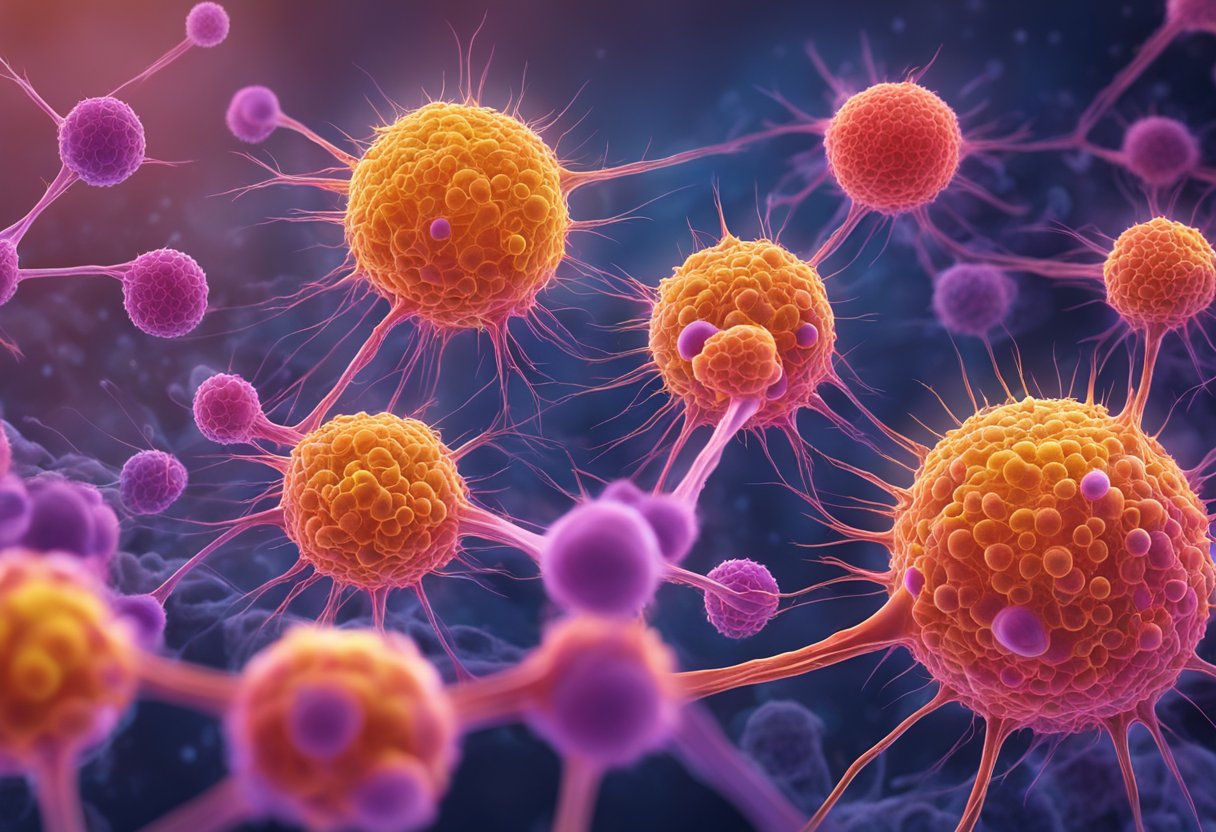
Nanotechnology is the science of manipulating matter at the atomic and molecular levels. It is a multidisciplinary field that incorporates physics, chemistry, biology, and engineering.
In medicine, nanotechnology is being used to develop new ways of diagnosing, treating, and preventing disease.
Nanoparticles are the building blocks of nanotechnology. They are particles that range in size from 1 to 100 nanometers.
These particles have unique properties that make them useful in medicine. For example, they can be designed to target specific cells or tissues in the body, and they can carry drugs or other therapeutic agents directly to those cells or tissues.
One of the most promising applications of nanotechnology in medicine is in the field of cancer treatment.
Nanoparticles can be designed to specifically target cancer cells, delivering drugs directly to the tumor site and minimizing damage to healthy cells. This targeted approach can also increase the effectiveness of chemotherapy and reduce the side effects associated with traditional cancer treatments.
Nanotechnology is also being used to develop new diagnostic tools. For example, nanoparticles can be coated with molecules that bind to specific proteins or other biomarkers associated with disease.
When these nanoparticles are introduced into the body, they can bind to the target molecules and be detected using imaging techniques such as magnetic resonance imaging (MRI) or positron emission tomography (PET).
Diagnostic Applications
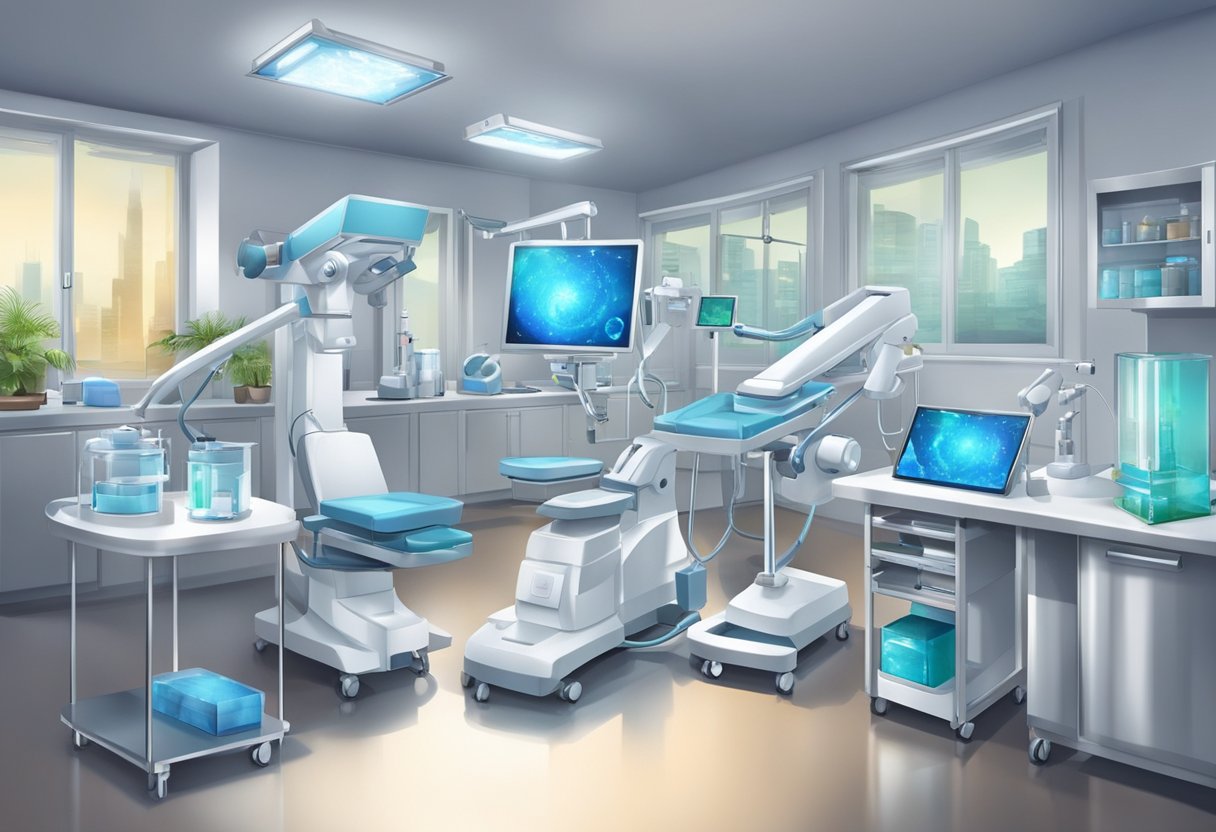
Nanotechnology has revolutionized the medical industry with its wide range of applications in the field of diagnostics. Two of the most promising diagnostic applications of nanotechnology are Nanoimaging and Biosensors.
Nanoimaging
Nanoimaging is a powerful diagnostic tool that uses nanoparticles to improve the resolution and sensitivity of medical imaging techniques.
These nanoparticles can be engineered to target specific cells or tissues, making them ideal for early detection of diseases such as cancer.
One example of nanoparticle-based imaging is magnetic resonance imaging (MRI), which uses magnetic nanoparticles to enhance the contrast between healthy and diseased tissue. Another example is computed tomography (CT), which uses gold nanoparticles to improve the accuracy of imaging.
Biosensors
Biosensors are another important application of nanotechnology in diagnostics. These devices use nanomaterials to detect and measure specific biomolecules in the body, such as glucose or cholesterol.
One of the most promising biosensors is the lab-on-a-chip device, which uses microfluidics and nanomaterials to analyze blood samples in real-time.
These devices can be used to monitor a patient’s health status and detect diseases at an early stage.
Therapeutic Applications
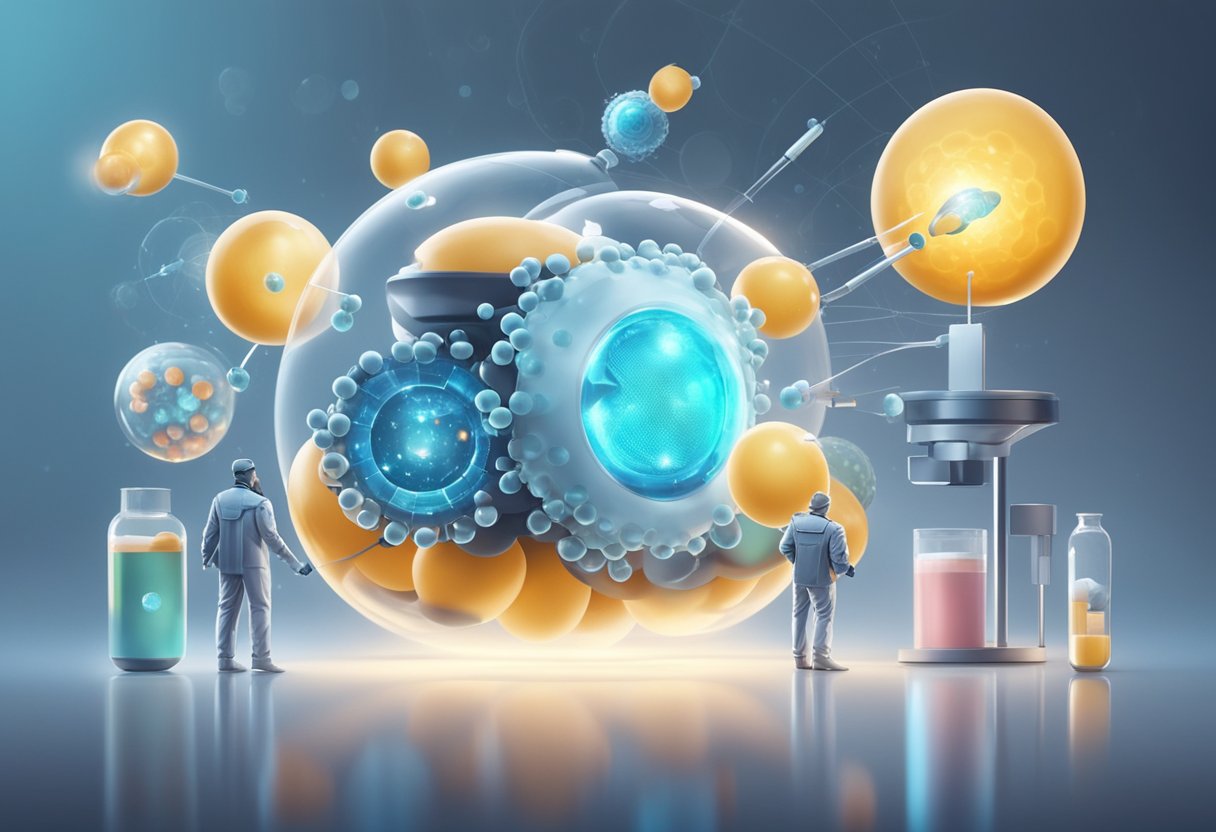
Nanotechnology has shown promising results in various therapeutic applications. Some of the most notable therapeutic applications of nanotechnology in medicine are discussed below.
Drug Delivery Systems
Drug delivery systems have been one of the primary applications of nanotechnology in medicine.
Nanoparticles can be engineered to carry drugs to specific cells or tissues, minimizing the side effects of the drug.
For instance, liposomes are spherical nanoparticles that can encapsulate drugs and deliver them to specific cells or tissues. Liposomes can be engineered to target cancer cells, making them an effective tool in cancer therapy [1].
Gene Therapy
Nanoparticles can also be used in gene therapy to treat genetic disorders.
Gene therapy involves the delivery of genetic material to cells to correct or replace defective genes.
Nanoparticles can be engineered to carry genetic material to specific cells or tissues, making gene therapy more effective.
For instance, gold nanoparticles have been used to deliver siRNA to cancer cells, inhibiting the expression of specific genes and preventing cancer growth [2].
Nanorobots for Surgery
Nanorobots are tiny robots that can be used in surgery to perform precise operations.
Nanorobots can be engineered to target specific cells or tissues, making them an effective tool in surgery.
For instance, nanorobots can be used to deliver drugs to specific cells or tissues, minimizing the side effects of the drug. Nanorobots can also be used to remove cancer cells from the body, making them an effective tool in cancer therapy [3].
[1] Applications of nanotechnology in medical field: a brief review
[2] Emerging Applications of Nanotechnology in Healthcare Systems: Grand …
[3] Therapeutic Nanoparticles and Their Targeted Delivery Applications
Regenerative Medicine

Nanotechnology has brought a new era of possibilities in the field of regenerative medicine. Regenerative medicine is an interdisciplinary field of medical applications in which the benefits of cell therapy and tissue engineering methods are well fabricated to device mechanisms for the treatment, maintenance, improvement, and reparation of damaged and dead cells, tissues, and organs.
Tissue Engineering
Tissue engineering is a technique that involves the fabrication of tissues and organs using cells, biomaterials, and biophysical and biochemical factors.
Nanotechnology has shown great promise in tissue engineering by providing novel materials that can mimic the extracellular matrix (ECM) of tissues and organs.
The ECM is a complex network of proteins and fibers that provides mechanical support to cells and guides their behavior.
Nanomaterials can be designed to have similar properties as the ECM, such as controlled shape, size, and topography, that can be used to mimic the natural environment of cells.
Bone Repair
Bone repair is an important aspect of regenerative medicine, and nanotechnology has shown great potential in this area.
Nanomaterials can be used to enhance the properties of bone grafts, which are commonly used in bone repair procedures.
For example, hydroxyapatite (HA) nanoparticles can be used to improve the mechanical properties of bone grafts and promote bone regeneration.
HA is a natural component of bone and teeth, and its nanoscale form can be used to enhance the biocompatibility and bioactivity of bone grafts.
Nanotechnology in Cancer Treatment
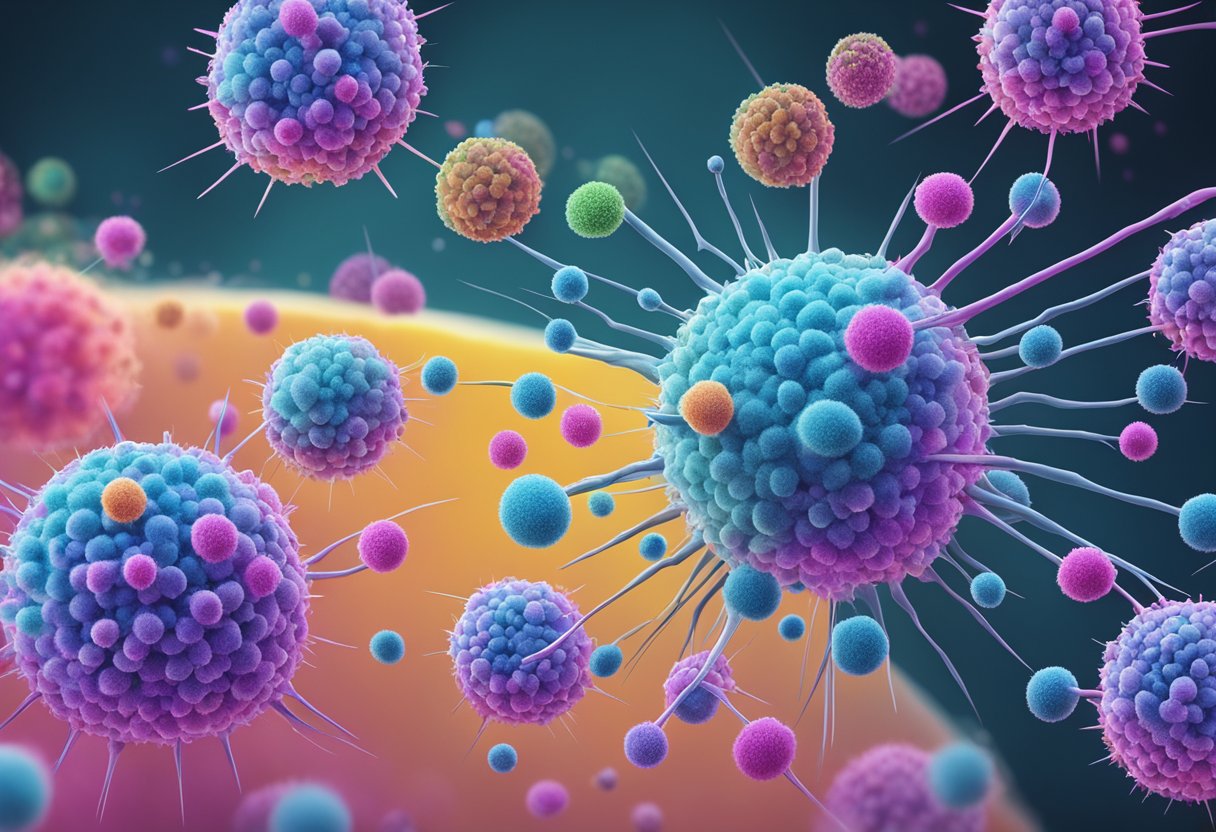
Nanotechnology has revolutionized the field of cancer diagnosis and treatment. By using nanoparticles, clinicians can safely and effectively deliver chemotherapy, radiotherapy, and the next generation of immuno- and gene therapies directly and selectively to cancerous cells and neoplasms. Moreover, surgical resection of tumors can be guided and enhanced by way of nanotechnology tools.
Targeted Drug Delivery
One of the major advantages of using nanotechnology in cancer treatment is targeted drug delivery.
Nanoparticles can be engineered to specifically target cancer cells while leaving healthy cells unharmed. This reduces the toxicity of chemotherapy and other cancer treatments, which often have adverse side effects.
For example, paclitaxel attached to the organic polymer-based albumin nanostructure has been approved by the FDA for the medical treatment of patients with metastatic breast cancer [1].
The polymer-based nanomaterial composition containing docetaxel is currently in the initial phase of clinical studies for patients with cancer [2].
Photothermal Therapy
Another promising application of nanotechnology in cancer treatment is photothermal therapy. This involves the use of nanoparticles that are designed to absorb light and convert it into heat, which can then be used to destroy cancer cells.
Gold nanoparticles are commonly used for photothermal therapy due to their unique optical properties. When exposed to light, gold nanoparticles generate heat, which can be used to destroy cancer cells [3].
In conclusion, nanotechnology has immense potential to improve cancer treatment. By using targeted drug delivery and photothermal therapy, clinicians can deliver cancer treatments more effectively and with fewer side effects.

